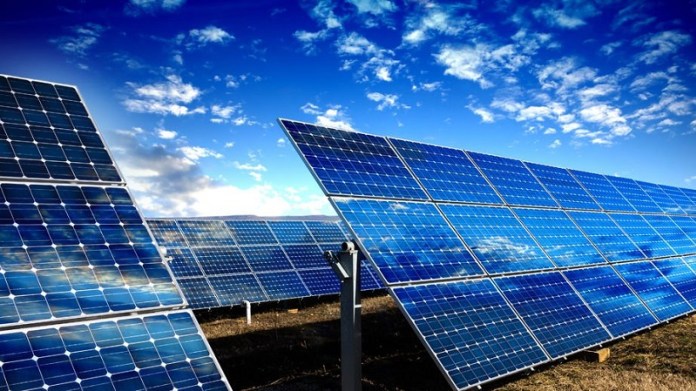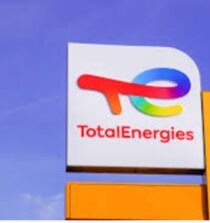By Olivia Coldrey, Energy Finance Lead (SEforALL) and Renat Heuberger, CEO (South Pole).
Efforts to get electricity and clean cooking to the poorest people are being hampered as promised funding is not reaching the ground
For many countries, a strong recovery from the global pandemic will hinge on reliable access to energy for hospitals, factories and farms to name a few – something that most of us in developed nations take for granted.
Yet today, 789 million people worldwide have no electricity whatsoever, and 2.8 billion – over a third of the world’s population – have no access to clean fuels or technologies for cooking.

Closing these gaps and achieving universal energy access by 2030, as called for by Sustainable Development Goal 7 (SDG7), will require significant investment. The International Energy Agency estimates USD 45 billion needs to be disbursed each year between 2020 and 2030 if we’re to achieve SDG7 targets.
Financing energy access is a two-sided problem. First, we need sufficient volumes of committed finance from the full spectrum of investors including development banks, commercial banks and governments. The second, more insidious challenge is that this finance must reach initiatives and projects on the ground for it to have any impact.
Today, both energy finance commitments and disbursements are nowhere near the levels required to achieve universal energy access. A recent report by SEforALL and South Pole tracked disbursements of development finance in 20 countries with the world’s highest energy access deficits over a six-year period. While USD 52 billion in finance was committed to these countries from 2013-2018, only USD 32 billion was disbursed.
The reality is that even if the world commits to providing the necessary volume of investment to meet SDG7, we would not close the energy access gap due to the slow and inefficient disbursement of these funds.
Disbursement delays are plaguing the energy sector and depriving millions of access to electricity and clean cooking solutions. In the countries we looked at, between 2002 and 2018 more than half of all energy finance commitments suffered from delayed pay-outs, and half of funded projects ran behind schedule.
Local barriers
Now, as countries fall further behind in attracting the energy financing they need, the cumulative lag in disbursements exacerbates chronic low volumes of committed finance. A combination of barriers is causing these delays. They include – but are not limited to – shortcomings in energy project design, poor coordination between donors and other project partners, and lack of consultation with those meant to benefit.
Project design flaws can occur, for example, when a project is scoped without due regard to prevailing conditions in a host country’s energy market, such as local energy consumption preferences; when beneficiaries are not fully informed about the energy solution, like solar panels; or when a project is designed without adequate technical assistance to support deployment.
Poor administrative capacity and lack of coordination between project stakeholders are also often responsible for disbursement delays. For example, they may not be fully aligned on the procurement procedures that need to be followed to efficiently purchase and deliver technical solutions.
Lack of access to local finance also delays disbursements. In some countries, we saw simple things missing, like bank accounts and consumer and business credit, which clearly impact project implementation.
Furthermore, financing for energy projects needs to allow for more risk-taking. Donors should take on greater risk in their investments to make it more attractive for private and local investors to come in and finance energy access for all. Local banks can also be guided to take on greater risk if they are encouraged to move away from only supporting ‘tried-and-true’ investments, which tend to be emissions-intensive.
Here, national governments can play an important role by providing strong policy frameworks and regulation. They are critical enablers of access to local credit by putting in place policies and programmes that strengthen local financial markets. Streamlining administrative, tax and regulatory processes to cut back on red tape would also help project developers.
These are just some recommendations for a smoother and more efficient disbursement of finance commitments for energy projects. Much more can and should be done to get money out of the door for projects that will lift people out of poverty and support their well-being.
Achieving universal energy access will be impossible without speeding up the disbursement of committed funds for energy projects. As COVID-19 continues to underscore the critical role of energy access in sustaining economic growth, now more than ever we need swift access to the finance that underpins it.
This article was first published by Thomson Reuters Foundation News









My partner and I absolutely love your blog and find a lot of your post’s to be exactly I’m looking for. Do you offer guest writers to write content to suit your needs? I wouldn’t mind creating a post or elaborating on a number of the subjects you write concerning here. Again, awesome site!
I’ve learn some good stuff here. Definitely worth bookmarking for revisiting. I wonder how much effort you put to create one of these great informative web site.
Magnificent web site. A lot of useful info here. I’m sending it to a few friends ans also sharing in delicious. And of course, thank you to your effort!